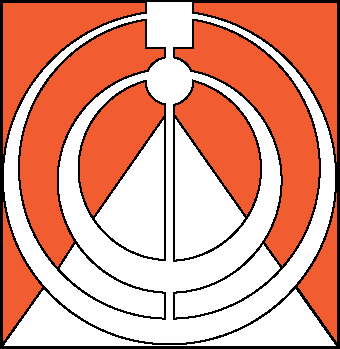Teaching Engineering and Teamwork to Sixth Graders with a Simple Hands-on Exercise
Wednesday, January 25, 2017
Watching a video of the ill-fated Tacoma Narrows Bridge collapsing in high winds might seem like a bang-up way to teach fundamental engineering concepts to sixth graders. That's why curriculum developers used it to introduce key engineering concepts  in the first unit of the Mi-STAR middle school curriculum.
Sixth grade teachers had some concerns, however. “When they were looking at that lesson, they thought it needed to begin it with something more basic, preferably something hands-on,†said Tony Matthys, a curriculum development assistant. Thus, the bead-in-the-cup activity was born.
“We wanted to see the kids work as a team as they built an understanding of these engineering concepts,†said Denise Bujalski, a sixth grade science teacher at Northeast Middle School in Midland. Too often, two or three hot-shot students will dominate a lesson while others sit back and watch. “We didn't want a few l
eaders to blow everyone else out of the water,†she said. “We wanted an activity that would teach everyone the benefits of working together.â€
The bead-in-the-cup activity has three advantages: it's easy and cheap, it works, and sixth graders love it. Bujalski says, “They have to figure out a way to get the bead into the cup without touching the bead. For each team of three or four students, we gather supplies that they can use in their design: a big plastic cup, a bead with a hole in it, and seven to 10 random items like: a beverage straw, a toothpick, a paper clip, a piece of string, maybe an eraser, whatever I have in my arts and crafts drawer.†These supplies represent constraints of the design solution; students can only use materials that the teacher provides. An additional constraint is that students cannot touch the bead during the activity and they have to work together.
The obvious criterion to the engineering challenge is that students must get the bead into the cup. This is what the solution must accomplish. However, since there are multiple solutions, students become aware that there are additional criterion that should also be considered and would determine which group has the best solution to the challenge. Â For example, additional criterion that would be useful to consider would include how long it takes to get the bead into the cup and the number of items used in the solution. Â In general a solution that takes less time and fewer materials is going to be superior to a solution that takes longer and uses more materials.
Typically, the students will try one thing, often placing the end of the straw over the bead, sucking on the straw lightly and then lifting it over to the cup and dropping it in. But if they solve the problem quickly, the teacher adds constraints, e.g., only two of the four team members can talk, they must all sit on their dominant hand, they must use all of their items, etc.
The solutions are many and varied. “I've even had kids who will try to shoot the bead into the cup,†Bujalski said. “But really, it's not about the bead in the cup. It's about working together to get the bead in the cup, about being comfortable working with others to solve a problem, and understanding criteria and constraints in engineering design. And it's very effective.â€
After the exercise, the class goes through a debriefing, discussing their solutions and lessons learned. “There's reflection; they realize that they did need someone else's help,†she said. “And they also found out that working together results in a more unique design–kids are competitive, and sometimes just picking the bead up with a toothpick doesn't cut it.†The activity really helps them understand the social aspect of engineering.
As hoped, the exercise has also proven to be excellent preparation for the rest of the unit. After completing the bead-in-the-cup lesson, the sixth graders have no trouble understanding that the Tacoma Narrows Bridge engineers failed to consider one important criterion -the  bridge should be able to withstand  high winds. Unfortunately, this oversight meant that the engineers did not perform any tests that might determine how well the bridge would meet this criterion before building it.  For example, the engineers never used a wind tunnel to simulate the possible wind forces on a model of the bridge. Unfortunately, this led to the ultimate collapse of the bridge.  The teacher is able to use the bead in the cup activity to draw a comparison – other than just getting the bead in the cup what other factors made one solution better than another? Students realize the importance of identifying all the criteria ahead of time, and the consequences when something is overlooked.
“Denise and the other Midland teachers identified a gap we'd missed in the original curriculum,†Matthys said. “We realized that we'd have to back up and give the students more experience, something that would give them the traction they'd need to define problems better.â€
Mi-STAR team expects to incorporate the teachers' innovation in the final version of this unit. “It seems like a good way to introduce these core concepts,†said Matthys. “And the students really get into it.â€
“We hope all teachers feel comfortable doing something like that,†he added. “We want all Mi-STAR teachers to feel empowered to address issues like this as they pop up.â€
GET Mi-STAR NEWS BY E-MAIL!
Copyright © 2025 Mi-STAR
Mi-STAR was founded in 2015 through generous support provided by the Herbert H. and Grace A. Dow Foundation. Mi-STAR has also received substantial support from the National Science Foundation, the MiSTEM Advisory Council through the Michigan Department of Education, and Michigan Technological University.


















